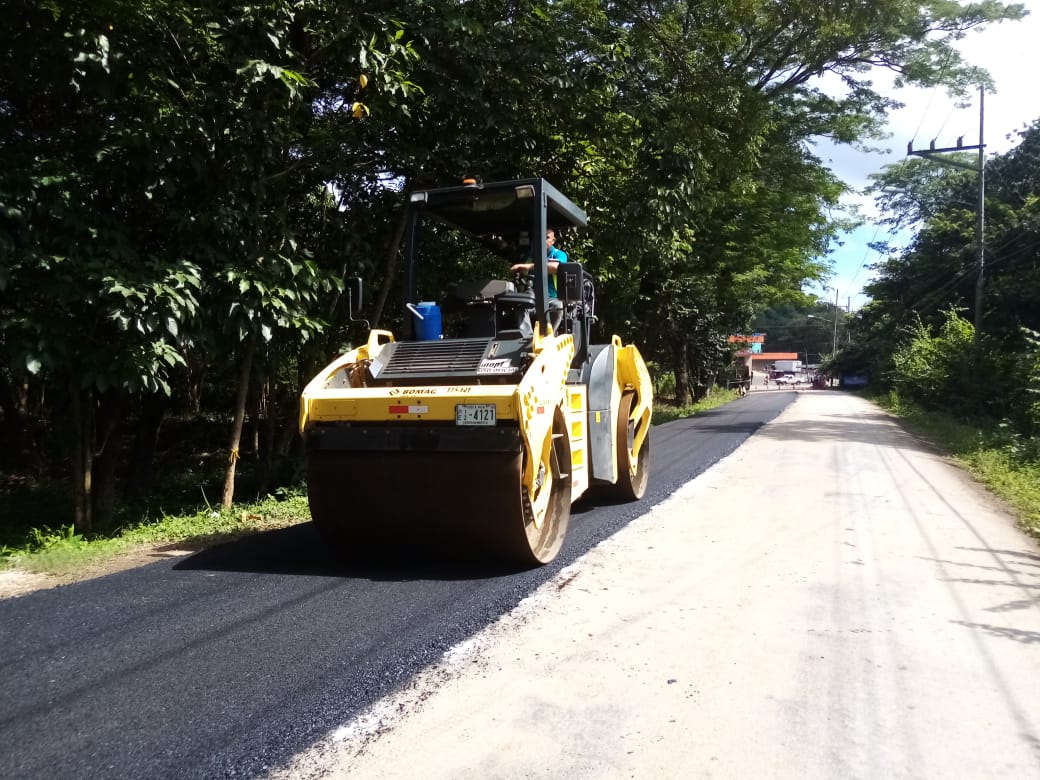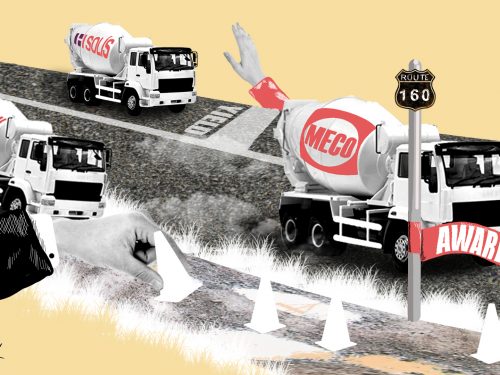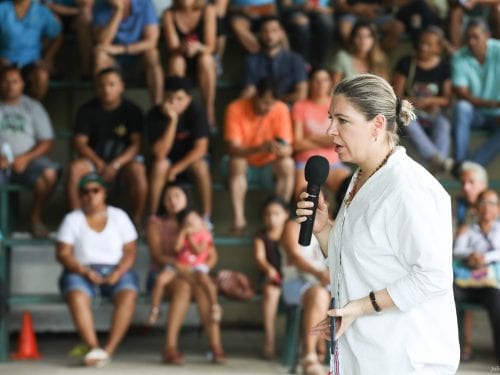
After decades of claims and broken promises regarding Route 160, the Ministry of Public Works and Transportation (MOPT) and the National Highway Council (CONAVI) began paving the first 10 kilometers (6 miles) between Garza and central Nosara at the end of September.
The asphalt arrived 10 months after the government’s coordinator of the Chorotega Region, First Lady Claudia Dobles, promised to improve the route by pouring a layer of asphalt and building three bridges for vehicles.
At that time, MOPT Minister Rodolfo Mendez Mata also reaffirmed his commitment to doing the work. MOPT and CONAVI leaders made the same promise years ago but without making progress on carrying it out.
In 2017, both institutions agreed that the first 10 kilometers (6 miles) of Route 160 would be completely done by the following year. The work did not advance because they couldn’t reach an agreement on per diem and overtime payments for personnel.
In 2020, after the government delivered the surface layer of asphalt, both institutions agreed to a permanent collaboration to finish the project.
Each institution’s role on the route will be handled like this: MOPT will oversee the budgets for labor and machinery, while CONAVI will finally include the necessary materials in its budget. This was confirmed by the president of the Nosara Integral Development Association (ADIN), Marco Avila, who represented the community during the process.
The MOPT press department stated that work didn’t begin until now because CONAVI had to prepare a contract to acquire the necessary asphalt mix. The institution didn’t approve that budget until a month ago.
Although the institutions began laying asphalt on the first 10 kilometers, building the bridges, also promised last November, will remain on hold until 2021 because they didn’t budget enough materials for that work.
The asphalt for the first ten kilometers will cost a total of ¢1,092,000 (about $1,850), in addition to the ¢4,272,000 (about $7200) for the first asphalt layer and the bridges. Macroregion Guanacaste, MOPT’s construction department in the province, is in charge of the work .
The institutions estimate that they will finish the work in December, depending on the rains during the last three months of the year.
A Route Full of Broken Promises
This is the first time that the government has executed a promised project on Route 160. The Voice of Guanacaste has historical records since 2007, when then-Minister Karla Gonzalez said that pavement would begin in 2009 and asserted: “I don’t promise things that I don’t fulfill.”
From that date until 2015, the governments of the day invested between ¢80 and ¢500 million ($141,500 and $1,100,000) each year in surface improvements along the route. These repairs had two things in common: they were carried out weeks before the July 25 Independence Day celebrations and, when the rainy season was over, the route returned to the way it was before.
In those years, another promise was made, said first by former President Oscar Arias: the pavement of Route 160 would come from the $850 million loan from the Inter-American Development Bank (IDB).
Three years later, the Nicoyan legislator from the National Liberation Party (PLN), Luis Antonio Aiza, denied that a budget ever existed within the resources from that loan. “They were false promises because that fund never existed,” he affirmed.
In 2015, CONAVI’s Institutional Planning manager, Monica Moreira, stated that Route 160 was included in the 2015-2018 National Development Plan. A year later, the office of President Luis Guillermo Solis stated that this was not the case, since “it wasn’t possible to obtain full financing for the route.”
In 2017, through conversations with community leaders from the Pro Asphalt Route 160 and Roads Committee, MOPT declared that “everything was ready” to begin work on the route. After internal budget conflicts with CONAVI, work was delayed until September 2020, when both institutions solidified their alliance.
Remainder of Route Still Waiting
This new plan consists of paving 10 more kilometers (6 more miles) of the route, starting from the middle of the center of Garza until reaching the community of Santa Marta.
Last year in November, Claudia Dobles announced that MOPT would conduct a study to define possible financing for the route’s second and third stages, which would include new sections of approximately 36.8 kilometers (22.8 miles) total, encompassing stretches that connect the district with Nicoya and Santa Cruz.
Almost a year later, the ministry doesn’t have a date set for conducting these studies and says that it won’t do so this year. “We are still in the pre-project phase. We still don’t have studies,” the press department replied when consulted by The Voice.







Comments